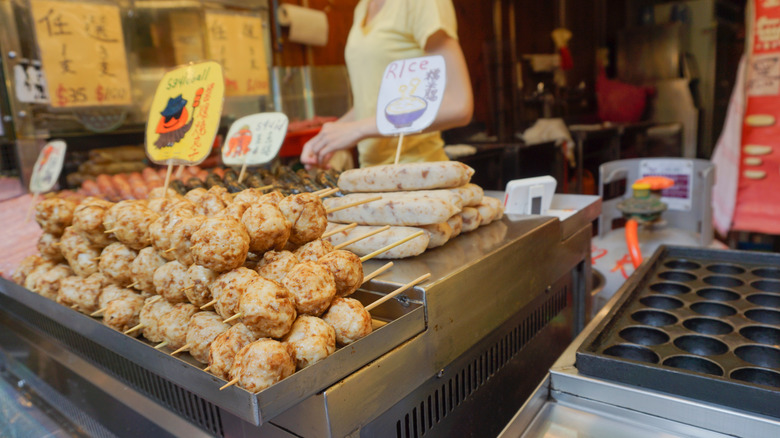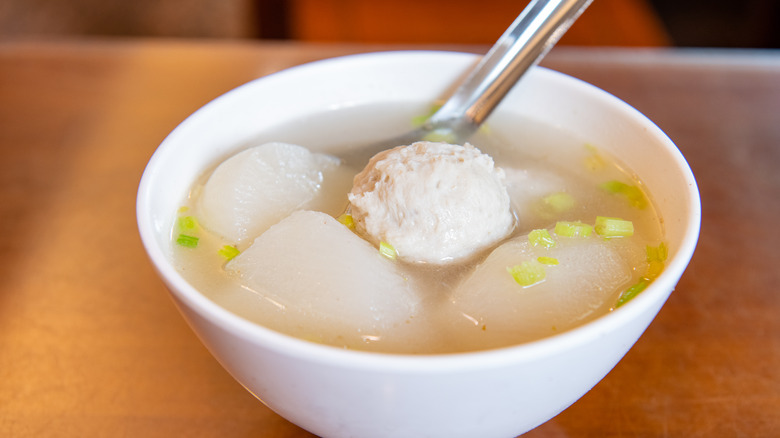How Do Taiwanese Meatballs Differ From Western-Style Meatballs?
You know and probably love meatballs – the dense, herby, and savory delights are a welcome addition to almost any pasta dish. Few scents are more comforting than fresh oregano, browning pork, and robust tomato sauce wafting through your house. Most American meatballs, according to The Atlantic, are a blend of lean and fatty pork or veal mixed with a combination of breadcrumbs, herbs, cheese, and egg. It can be served with marinara sauce over pasta, to create the beloved classic spaghetti and meatballs. However, just like dumplings or pizza, meatballs are a dish that transcends international borders and has unique variations that are traditional to different cultures all over the world.
According to Serious Eats, meatballs were originally invented as a way to use and combine leftover cooking scraps together in one dish. Different cultures incorporate different meats and seasonings to reflect their preferred palates. For the Taiwanese, that typically includes fish.
What makes Taiwanese meatballs so unique?
Q is an important culinary concept in Taiwanese culture. It describes a chewy, bouncy texture that can be exhibited in some foods and its desirable mouthfeel. The New York Times describes Q by writing, "The texture is found in both savory and sweet foods, and is most often used to describe foods that contain some kind of starch like noodles, tapioca pearls, and fish balls." Fish balls are a popular snack, and can be served in a variety of ways.
They're formed using catches of unsold fish, including squid and miscellaneous shellfish. The meats are blended together with starch to form a batter, then they are shaped into balls and cooked in barely simmering water, according to Serious Eats.
These meatballs have a compact structure and elastic texture, in contrast to Western meatballs, which have a more loosely packed form. They're also boiled and served topped with celery leaves bathing in a clear pork broth soup with daikon cubes. Deep-fried versions are also popular and portable snacks are served with a sprinkle of white pepper (via Serious Eats).

